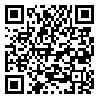Volume 11, Issue 40 (Social Welfare Quarterly 2011)
refahj 2011, 11(40): 315-339 |
Back to browse issues page
Abstract: (8370 Views)
Objective: The purpose of this research was to determine expenditure
distribution and inequality changes in Tehran. It separately explored
expenditures distribution for health, education, and food in rural and urban areas
from 1989 till 2006.
Method: Using Household Expenditure Survey conducted by Statistical Center
of Iran, expenditure distribution and inequality changes for urban and rural areas
in Tehran and whole of the country within the time span of 1989 to 2006 were
calculated. Gini Coefficient and Theil's Index were calculated and the results
were compared.
Findings: Inequality in health and education expenditures are too severe
(Gini=0.6-0.8) but, food and gross distribution expenditure are more equal
(Gini=0.3-0.4). There was a significant difference between urban and rural areas
in Tehran for gross expenditures. Heath expenditures distribution in urban of
country was more equitable than Tehran, but in rural areas, there was an adverse
condition. Regarding education expenditures, there was only a significant
difference between rural areas in Tehran and whole of the country that means
distribution expenditure in whole of the country in more equitable.
Conclusion: With respect to the calculated indices, there are severe inequality in
health and education expenditures both in Tehran and whole of the country, but a
nearly equitable distribution about food and gross expenditures. These results show that food expenditures have a significant relationship with gross
expenditures and therefore, food expenditure shows the real consumption of the
households. For these, policymakers have to pay more attention to health and
education expenditures in targeting subsidies.
Keywords: consumption expenditures, education, food expenditures, Gini coefficient, health, inequality, Theil index.
Type of Study: orginal |
Received: 2011/09/18 | Published: 2011/04/15
Received: 2011/09/18 | Published: 2011/04/15
| Rights and permissions | |
 |
This work is licensed under a Creative Commons Attribution-NonCommercial 4.0 International License. |


